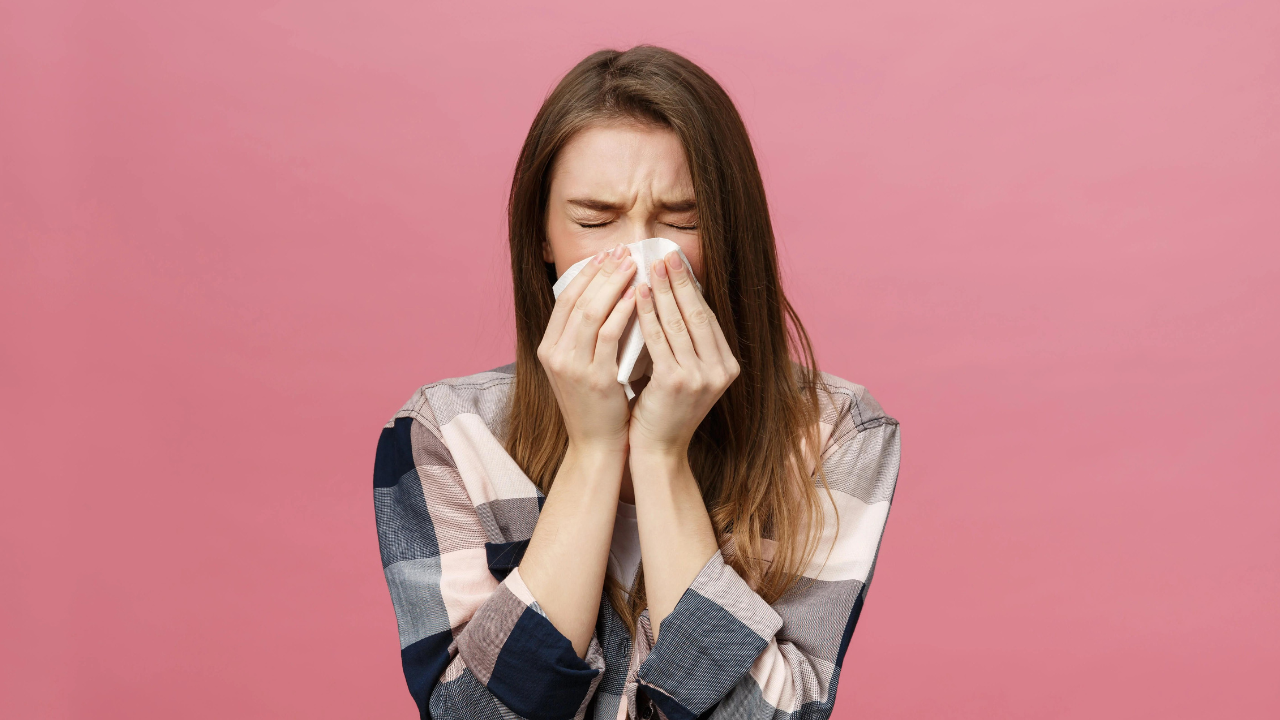
For the past couple months, the UK has been experiencing a very rare – but very welcome – heatwave, but with the heat has come a high pollen count. This week, many areas in the UK have been hit with a high pollen count warning by the Met Office, which isn’t great news if you’re an allergy sufferer.
An increased pollen count can make you feel itchy, uncomfortable and sneezy – and that’s not just when you go outdoors. Pollen, dust and other allergens can easily get inside your home and trigger your allergies, but it’s even worse when you’re trying to sleep.
To find out more, I spoke to Martin Seeley, sleep expert and CEO of MattressNextDay who explained the five most practical ways to minimise pollen indoors and allergy-proof your bedroom.
1. Keep Bedroom Windows Closed
Opening doors and windows is a quick, easy way to cool down when the weather gets scorching. But this actually affects how much pollen enters your home, as it's easily carried in by the wind and lands on furniture. This is particularly bad for your bedroom, as pollen settles on bed sheets and can make your allergies worse while you’re trying to sleep.
To avoid this, Seeley recommends keeping “bedroom windows closed to prevent pollen from coming in. If you need to cool down your room, consider using a fan with a clean filter to circulate fresh air without letting pollen inside.”

2. Wash Bedding Once a Week – But Stay Away from Fragranced Detergents
In general, you should be washing your sheets at least once a week or every two weeks. But when the pollen count is high, it’s best to wash your bedding at least once a week to minimise pollen build-up. “If your bed sheets allow it, wash them at a high temperature as this helps remove pollen particles and other allergens,” says Seeley. “I’d also recommend using a non-bio, fragrance-free detergent, as strong fragrances can make bedding attract more particles.”
3. Never Dry Bed Sheets Outdoors
As it’s hot outside, you might be tempted to dry your bedding outdoors to save money on your tumble drying. But “on high pollen days, this can cause pollen particles to stick to the fabric, worsening allergy symptoms,” Seeley warns.
Instead, give your sheets a good shake after washing to separate the fibres and speed up drying, before hanging it indoors or using your tumble dryer. Try to wash sheets in the morning so you can take advantage of the natural air flow and warmer temperatures throughout the day, so your sheets can dry quicker even when indoors.
4. Vacuum Regularly, and Temporarily Remove Your Rug
Pollen sticks to absolutely everything, including your floor. Carpets and rugs tend to trap pollen in their fibres, so make sure to vacuum your bedroom every two days to remove pollen from your house. Seeley recommends “using a vacuum cleaner with a HEPA filter to trap small particles and remember to vacuum under your bed, as this is another dust-mite hotspot.”
If you’re really suffering with allergy season, consider removing rugs from your bedroom and other rooms in the house to avoid excess pollen and dust. Aim to dust your house every few days, especially on window sills, shelves and bedside tables, as “these are common places where pollen can collect.”

5. Use Hypoallergenic Mattress and Pillow Covers
During the hotter months of the year, switch to lighter duvets and sheets so you don’t get too hot and bothered. When you do this, consider switching to different mattress and pillow covers to reduce allergen exposure. Seeley states that “using dust mite covers on mattresses and pillows creates a barrier between the dust mites and the person sleeping on the bed… Opt for hypoallergenic covers or a mattress protector to provide an extra layer of protection.”







